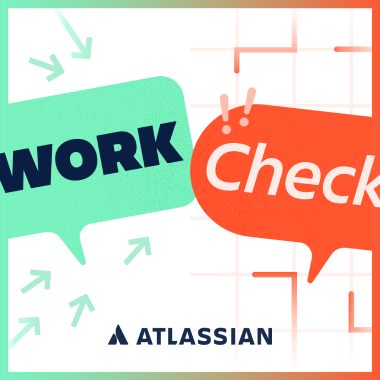In today’s fast-changing work environment, adaptability isn’t just a buzzword; it’s a research-backed superpower. As AI integration and other technological advances continue to redefine workflows and industries, organizations that prioritize adaptability and flexibility will be the ones that build the resilience to thrive. But adaptable teams don’t grow on trees. They’re the result of organizations and leaders that embrace continuous learning as a core value.
The power of an adaptable workforce
Adaptability is the capacity to pivot in response to change – to roll with the punches and meet new challenges head-on. Teams that can embrace uncertainty, learn quickly, and innovate under pressure are able to cultivate the resilience that gives organizations a competitive edge. In fact, new research published in the International Journal of Information Management confirmed a well-established hunch that innovation and organizational resilience go hand-in-hand in ensuring success in today’s complex and uncertain economic landscape. In an analysis of 343 service companies in Spain, the researchers uncovered a direct link between organizations’ flexibility to recalibrate strategies to meet changing demands and those organizations’ ability to weather a volatile market. They were also better equipped to maneuver the post-pandemic transition to a digital-first business environment.
To sum it up: When employees and teams are adaptable, they’re better equipped to solve unforeseen problems, adopt emerging technologies, and contribute to an organization’s growth.
Creating a workforce that thrives on adaptability starts with having a clear vision and values, a North Star to guide the organization’s priorities. From there, leaders should model a flexible mindset in how to get things done. But the real game-changer? Embedding an ethos of continuous learning into the heart of the organization’s culture.
How learning fuels adaptability and innovation
“Learning agility” and innovation
In turn, companies that invest in developing the skills of their workforce report 11% greater profitability and are twice as likely to retain their employees, according to a Gallup report.
“When an organization prioritizes and dedicates time to learning, it sends a clear message to its employees that they are valued and have the potential to grow,” said Julia Phelan, co-founder of the education consultancy firm To Eleven. “This realization encourages employees to explore opportunities for leadership and development within the organization.”
Ongoing learning doesn’t just make employees more effective and engaged at work. It creates an experience of personal growth that boosts their confidence and self-assurance across the board. “They embrace changes and challenges more bravely,” said Alex Li, founder of the AI homework-assistant platform StudyX. “This not only benefits the employees themselves but also becomes a key force driving the company to adapt to market changes.”
Learning and leadership development
An organization that strives to build the capacity of its workforce is also better poised to develop future leaders from within. “Organizations prioritizing internal development tend to see better retention and more innovative leadership,” said Masero. “These leaders already understand your culture and operations, and their growth journey inspires others.”
Online Games CEO Marin Cristian-Ovidiu agrees that a culture of continuous learning can promote internal leadership development, thus giving organizations a leg up. “Leaders who rise from within know the company culture, values, and challenges deeply,” Cristian-Ovidiu said. “True adaptability is built by investing in the talent you already have.”
Developing future leaders from within can even strengthen an organization’s foundation, says V. Frank Sondors, founder of the AI-powered sales platform, Salesforge. “Internal promotions bring a deep understanding of the company’s values and processes, saving time on onboarding while maintaining continuity,” said Sondors. “I’ve seen this firsthand when a team member who started in a junior sales role became one of our top managers after a structured leadership training program.”
Renee Rubin Ross, founder of the nonprofit consulting firm, The Ross Collective, adds that professional development and learning initiatives have been vital for employee recruitment and retention among her clients. “These organizations want to be perceived as good places to work, which includes growing their people,” Ross said.
Strategies for a learning-centered culture
It should come as no surprise that continuous learning is the foundation for a workforce that can respond quickly to the curveballs of industries in constant flux. “When employees regularly engage with new ideas and skills, they develop what we call ‘learning agility’ – the ability to grasp and apply new concepts quickly,” said Ricci Masero, marketing manager for the e-learning platform Intellek. “This is crucial because the specific technical skills needed for a role might change without much warning, so the ability to learn and adapt remains incredibly valuable.” That may be especially true with today’s advancements in AI.
Illuminate the path to career growth
- “Employees want to see an obvious path to advancement and growth – so show it to them,” said Phelan. “Talk about upskilling and reskilling and aligning these opportunities to personal aspirations and organizational goals. Make sure employees know how to take advantage of learning opportunities in a meaningful way.”
- “Map out learning pathways that lead to new roles or responsibilities,” said Masero. “When people see how learning translates to opportunity, they’re more motivated to engage.”
Normalize risk-taking
- “Ensure team members feel safe experimenting and reflecting, which sparks creativity and long-term problem-solving skills,” said Dane Nk, founder of That VideoGame Blog.
- “Recognize people who take risks and try new approaches, even if they don’t always succeed,” said Masero.
Enable knowledge-sharing
- “Make resources available such as learning ecosystems, mentorship, and cross-functional projects,” said Sara Sparrow, HR manager at Academized.
- “Offer mentorship programs and host regular knowledge-sharing sessions,” said Sondors.
- “Encourage cross-departmental projects and job shadowing to expose employees to new perspectives,” said Simon Elliott, founder and operations director of the custom clothing company, CLIFTON.
Companies that invest in developing their people are equipped to create a workforce that’s not just resilient but prepared to greet the future with confidence.












































